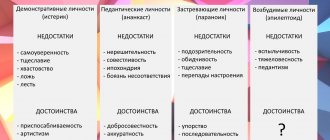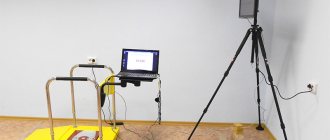Who are visuals?
Visual perception plays a big role in our lives.
It helps to understand the surrounding reality and interact with other people. It is so natural for a person to see the outside world that many people do not even think about the enormous importance of this channel of perception. Understanding how a visual person perceives information opens up great opportunities for closer interaction with customers. Psychologist Richard Gregory argues that human visual perception proceeds “from top to bottom,” that is, from the general to the specific. Visuals form their picture of perception, moving from large details to smaller elements. This allows them to make good guesses about what they see. In other words, every visual person in the store is making calculated guesses. If he liked the product at first sight, he will try to examine it in detail to make sure that his eyes did not deceive him and that the product corresponds to his expectations and level of past experience.
How it can be used
Working with visuals is very easy
It doesn’t matter what the business segment is - knowing how a visual person perceives reality will help present a product or service to him in the most favorable light. A beautifully designed showcase, correctly placed goods on the shelves, an elegant office interior - and the visuals are captivated. A beautiful picture means a lot to him
A beautiful picture means a lot to him.
But don't deceive visual learners. Even a small flaw will not go unnoticed. Any product for people with a visual type of perception must have a first-class design and impeccable appearance.
Which type of perception is more developed in you?
This theory is based on the study of the influence of neurolinguistic programming on the human psyche. Each of us contacts the world around us in a special way and perceives it in our own way. A person reproduces and processes received signals depending on the senses he uses for this. This is related to the way of thinking, behavior, ability to learn and remember.
Your individuality is manifested in which of the methods of perception you use.
There are people who only have one channel that is really well developed, but more often two or more predominate. In addition, personality also depends on the hemispheric dominant. Some people have a more developed left hemisphere of the brain - such people use logic more often and strive for order.
On the other hand, those with a dominant right hemisphere approach everything creatively and are more inclined to innovation and flexibility. Neurolinguistic psychology explains how we see the outside world.
Do you want to know yourself better and determine your personality type depending on the way you perceive? We will tell you the difference between visual, kinesthetic and auditory learners.
Type of perception: visual
Are you one of those who require maximum silence when reading? This is very common among visual people: they need silence in order to fully concentrate. They may listen to music while driving, but when they need to find a specific street or be more alert to traffic, they turn down the volume or turn it off completely.
They are energetic and very, very observant people. They evaluate every aspect of a subject and do not miss the slightest detail. They find it easier to remember new things through pictures or by taking notes. They receive most of their information using vision. For relaxation, they often choose parks or forests. And silence.
Type of perception: auditory
Do you often raise your tone and express your thoughts loudly? This may seem like a strange habit to others, but it’s just a matter of the type of perception. In fact, there are a lot of people who verbalize their thoughts, talk to themselves and like to “talk it out”. If you are an auditory person, you also like to listen to other people and remember information better when heard than when written.
Auditory learners are expressive and very sociable by nature. They know how to express their ideas and listen to others. They are not disturbed by extraneous noise, they can carry on a conversation with loud music. Auditory learners are able to do several things at once, unlike visual learners who find it difficult to complete tasks if they are distracted by the external environment.
Type of perception: kinesthetic
Do you like touch? Are you good at cooking or doing things with your own hands? Work outdoors? Would you like to have a garden, grow flowers and take care of plants? Maybe you play sports? If you answered yes to most questions, you are a kinesthetic learner.
NLP (neurolinguistic programming) claims that despite the fact that kinesthetics are quite calm, they assign a large role to the emotional component, especially physical and tactile contact. This group includes people who are eager to try before getting information from someone. Notably, they express their thoughts and feelings through hugs, touches, and food. They don't pay as much attention to their surroundings as visual learners. Such people are usually more spontaneous and less focused and attentive.
In conclusion, let us add that it is possible that each type of perception manifests itself in you in different proportions. This is normal, but you can still find more common ground with a particular group. Visual learners, for example, are usually more relaxed than auditory and kinesthetic learners. The latter, in turn, are more active and excited.
Of course, each of us contains traits of all three types in one way or another, but NLP allows us to consider the prism through which we see the surrounding reality. And how a person perceives it is closely related to personality and character: one can be calmer or nervous, thoughtful or reckless, sociable or detached, an active participant or an outside observer. Our way of acting and expressing emotions depends on the senses and the joy of seeing, hearing, touching, tasting and speaking...
How do you interact with the outside world? Who are you: visual, auditory or kinesthetic?
Who are you: rational or intuitive?
We will offer several ways for you to describe yourself. Who are you: rational or intuitive? What socionic type? Read more "
Discrete
The ways of perceiving information are directly related to the human senses. The majority of people gain knowledge through sight, hearing, touch, smell and taste. However, types of information perception include those that are primarily associated with thinking. People who perceive the world around them in this way are called discretes. There are quite a few of them, and they are found only among adults, since logic is not sufficiently developed in children. At a young age, the main ways of perceiving discrete information are visual and auditory. And only with age do they begin to actively think about what they saw and heard, while discovering new knowledge for themselves.
Audials
For auditory learners, the perception of various sounds is primary. This group of people includes those who most accurately perceive information by ear and makes up about 60% of all humanity. They easily grasp the meaning of phrases and texts spoken out loud and without visual accompaniment. However, auditory learners have difficulty perceiving and remembering faces and objects, in contrast to the sounds and voices of people - it will be enough to hear a sound once and it will “settle” in the auditory learner’s memory for a long time. We can say that such individuals live in a world of melodies, rhythms and sounds.
Often, auditory learners are characterized by vivid and emotional speech. They incredibly “come to life” when talking, their speech is filled with many sounds in the form of exclamations, sometimes they almost turn to screaming. And all because the voice of a person of this type is, as a rule, very loud, ringing and melodic.
Under no circumstances should you interrupt the audio speaker’s monologue, otherwise he may become silent and no longer enter into conversation with the person who interrupted him. When entering into a dialogue with an interlocutor, auditory learners are at a close distance from him in order to accurately grasp the speaker’s intonation.
Often in their conversation they use words such as “quiet”, “sound”, “loud”, “shout”, “listen”, etc. It is also common for auditory learners to use phrases such as:
- “listen to what I say”;
- "I'm glad to hear you";
- “This sound annoys me”;
- “sounds tempting”;
- “what does this mysterious tone mean”;
- “your idea sounds great.”
Auditory learners enjoy listening to music and enjoy singing, even if they are just humming something out loud. Therefore, a person of this type chooses the profession of a composer, musician, psychologist or lecturer.
From the editor: Causes of epilepsy in adults
Even before entering into a conversation with an auditory person, you can recognize him by his external signs. For example, this person always sits straight, stretching his neck and slightly leaning his body forward - this is his perception; it is easier for him to grasp information through the sounds reaching him in the smallest detail. Audials have a well-developed chest, and their breathing is even and deep.
At first glance, it may seem that such a person is somewhat arrogant and stubborn, but in fact, auditory people are very good-natured, always open to conversation and able to empathize. They will not only tell you completely sincerely how they are doing, but they will also be happy to inquire about the life of their interlocutor and listen to his story. It is not typical for auditory learners to look into the eyes of their interlocutor, since for them this causes tension and often distracts from the idea that needs to be conveyed or from the perception of the other person. And, of course, auditory learners love with their ears.
Type of perception and learning ability
The ways people perceive information largely determine the form of learning that will be most effective for them. Of course, there are no people who would receive new knowledge entirely with the help of one sense organ or a group of them, for example, touch and smell. All of them act as means of perceiving information. However, knowing which sense organs are dominant in a particular person allows others to quickly convey the necessary information to him, and allows the person himself to effectively organize the process of self-education.
Visual learners, for example, need to present all new information in a readable form, in pictures and diagrams. In this case, they remember it much better. Visual people usually excel in the exact sciences. Even in childhood, they are excellent at putting together puzzles, know many geometric shapes, are good at drawing, sketching, and building with cubes or construction sets.
Auditory learners, on the contrary, more easily perceive information received from oral speech. This could be a conversation with someone, a lecture, an audio recording. When teaching a foreign language for auditory learners, audio courses are preferable to a printed tutorial. If you still need to remember the written text, it is better to speak it out loud.
Kinesthetic learners are very mobile. They find it difficult to concentrate on anything for long periods of time. Such people find it difficult to learn material learned at a lecture or from a textbook. The memorization process will go faster if kinesthetic learners learn to connect theory and practice. It is easier for them to learn sciences such as physics, chemistry, biology, in which a specific scientific term or law can be represented as the result of an experiment carried out in a laboratory.
Discrete people take a little longer than other people to take new information into account. They must first comprehend it and relate it to their past experience. Such people can, for example, record a teacher’s lecture on a dictaphone and subsequently listen to it a second time. Among the discretes there are many people of science, since rationality and logic are above all else for them. Therefore, in the process of studying, they will be closest to those subjects in which accuracy determines the perception of information - computer science, for example.
History of the study
Surprisingly, the study of proprioception began two hundred years ago. In 1826, neurologist Charles Bel wondered what other functions muscles had other than contracting at the command of motor neurons. He came to the conclusion that they also “tell” the brain about the position of the body and limbs, if there is no other way to know about it (for example, if you cannot see your hands).
In 1887, neurologist Henry Charlton Bastian proposed replacing the term "kinesthesia" with the general terms "muscle sense" and "pressure sense." According to Bastian, kinesthesia is the perception of body and limb movements in space, the degree of effort and weight applied.
Almost twenty years later, in 1906, neurophysiologist Charles Scott Sherrington separated the terms “proprioception,” “extreception,” and “interception.” Proprioception, he said, is the sensation of the body that comes from sensory receptors - proprioceptors located in the muscles, ligaments, and joints.
Interception and extroception give the brain information about internal organs and the external world, respectively.
Initially, scientists argued that the brain has an idea of the position of the limbs from the muscles. In the 20th century, they attributed this role to the joints, relying on studies of stretch receptors in the knee joints of cats. Today, the opinion has changed, and most neurologists believe that the principle of proprioception is based on muscle receptors.
Perception and presentation of information
Perception of information is an acquaintance with objects and phenomena that directly affect the reaction of the senses. Through the analysis of objects that influence a person’s subconscious or various senses, thanks to which he can have an idea about them. When perceiving information, all five organs of perception are involved: hearing, vision, smell, touch and taste.
Plus, life experience and knowledge that he received throughout time and his age are used. Information can be attributed to phenomena that may exist in nature or create a separate category. The perception of information is based on processes that directly interact with the psyche, they are as follows:
- thinking is based on what is seen or heard, but at the same time thinking and awareness of what he will have to face begins;
- speech, give a name to the object of perception;
- feelings, sensory reactions to various objects;
- will is when a person knows how to create the technique of perception himself.
- Presentation of information has several types using:
- text (words are made up of letters and sentences are made of words);
- numbers (mathematical solutions);
- sounds (oral speech);
- graphic elements (graphs, tables).
They are inseparable from each other, so you need to choose the information that you understand.
The perception of information should be in any form that is a reflection of reality or fiction. Because we live in the real world and we can experience an unreal world. Everything that passes through us, i.e. all information that we take for granted must be clearly understood and accepted as it will appear. But for each person, the information will be different, since we are all different people and live differently, and perceive everything differently. Individuality is the most important thing in the perception of information; each person will listen to what he needs, and will simply miss the rest.
Characteristics of auditory people
You can identify a visual person by their characteristic facial expressions. It serves as its distinctive feature. Much is determined by a person’s gaze:
- directed upward and to the left when trying to remember any information;
- up and to the right when fantasizing;
- straight and into the distance during mental activity.
These signs are typical for people with a predominant visual channel of worldview. By the look of a visual person, you can determine whether he is telling the truth or lying.
Visuals are characterized by the following features:
- perception of information through images;
- pronounced gestures;
- using the words “see”, “notice”, “it seems to me”, “take a look”, “look” when speaking;
- perception during the learning process only of visual information in the form of graphs, diagrams, drawings, photographs, experiments;
- paying attention to the appearance of other people, their facial expressions, gestures, postures;
- good imagination.
For a visual person, appearance is important. He is receptive to everything he sees. Such people appreciate the beauty of the world and its individual objects. They do not like dirt, sloppiness and disorder. If a child is a visual learner, then during the learning process he will better assimilate information presented to him in schematic and illustrated form.
Visualists prefer to keep their distance when talking to other people. A comfort zone is important to them. Moreover, the distance between them and their interlocutors should be at least one meter. The gaze of visuals wanders and is in search. To successfully complete their tasks, such people need clear diagrams, visual pictures and images.
For this type of perception, information received through the organs of hearing is of particular importance. An auditory learner can be called a person who better assimilates material read aloud
This is especially important for schoolchildren. Auditory children remember well only information that was presented to them orally by the teacher.
The following characteristics are characteristic of audio:
- the use of “auditory” phrases in speech (“I heard”, “I can’t understand”, “tell me”, “I heard it”, “listen to me”);
- good perception of music, conversations;
- good hearing;
- the need for complete silence when concentrating on something;
- high demands on both one’s own and others’ speech;
- great love for music;
- sensitivity to conversations;
- good auditory memory.
People of this type are considered good storytellers. They prefer to discuss any issue with others. This way they learn any material better. Auditory learners are more focused on communication than others. This is one of the most sociable types of people.
Auditory learners are worse than others at remembering people's faces and are not always well oriented in space. But they recognize a person by his voice better than others. You can identify such people by their gaze. For them it is usually directed either to the right or to the left.
Auditory learners are less prone to conflicts than others and more often prefer not to raise their voices. Their speech is usually even, and their speech is measured and calm. A common profession among auditory learners is musician. Given their sociability and ability to conduct a conversation, such people achieve success in work related to public speaking.
For the auditory, only a specific fact without unnecessary details matters. It is important for him to have contact with a person who has a pleasant timbre of voice for him. They pay less attention to people's appearance, being guided mainly by auditory sensations.
Types of perception
The same information, obtained in any particular way, is perceived differently by each person. Someone, after reading one of the pages of a book for a minute, can easily retell its contents, while others will remember practically nothing. But if such a person reads the same text out loud, he will easily reproduce in his memory what he heard. Such differences determine the characteristics of people’s perception of information, each of which is inherent in a certain type. There are four in total:
- Visuals.
- Auditory learners.
- Kinesthetics.
- Discrete.
It is often very important to know what type of information perception is dominant for a person and how it is characterized. This significantly improves mutual understanding between people and makes it possible to convey the necessary information to your interlocutor as quickly and completely as possible.
Visuals
For this type, perception through the organs of vision is paramount. Such a person most fully assimilates information that is received visually, that is, through the eyes, about 20%. He perceives the world around him, for the most part, relying precisely on visual images. This is due to the fact that visual learners have the most developed visual memory. They, unlike auditory learners, during a conversation try to stay at a distance from the interlocutor in order to be able to examine his appearance, clothes, and facial features.
In addition, visual learners themselves are excellent storytellers, as they can easily retell an event they saw, a picture presented, etc.
Extraneous noise does not bother them at all; they easily concentrate their attention on a visual description of something: diagrams, pictures, tables, diagrams
In their speech, they often use the words “look”, “bright”, “clearly”, “see”, “look”, “I see”, as well as, for example, phrases such as:
- "From my point of view";
- "Without a shadow of a doubt";
- “It’s standing before my eyes”;
- "I think";
- “Present yourself in a favorable light”;
- “Describe the situation to me”;
- "Vague Idea";
- "Beautiful words".
If a visual person is among a large number of people, then he will try to take a place in the room from which he could see most of those present, because for such a person it is very important what the people around him and himself look like. They prefer to wear bright, eye-catching clothes, even if they are completely uncomfortable to wear.
For visual people, the interiors of the places where they like to be are of great importance, so they approach the arrangement of their home very seriously and with taste. This also applies to the appearance of the food that visual people eat.
Visuals have some peculiarities in their character: they are sharp and impetuous. When talking with an interlocutor, they try to catch all his movements, facial expressions, postures and gestures. In addition, they value their personal space very much, and if someone suddenly invades it, a person of the described type involuntarily crosses his arms and legs, as if closing himself off from everyone. Visual people do not like to be touched and do not tolerate hugs.
The posture also often reveals the personality of the type being described: they always stand and sit straight, but if they slouch, they raise their head up for ease of perception of information. Their shoulders are always straightened and their chest is open, breathing occurs with the upper part of it.
From the editor: Types, causes, signs and methods of treatment of spinal cord tumors
The imagination of such people is very well developed, which gives them the ability to be creative. Among visual people there are many representatives of creative professions, such as artists and designers. At the same time, they are good at planning and competent systematization of activities: such a person will always clearly distribute tasks among employees, achieving high efficiency in their work. Having a pre-developed scheme or strategy makes it much easier for them to complete certain tasks.
They love visual people with their eyes.
The role of information in communication
People with each type must correctly approach the person with whom they want to share and perhaps listen to their opinion. Visual people evaluate their interlocutor by appearance. If suddenly there is the slightest flaw in the appearance of the interlocutor, then the information of interest will become dull and uninteresting. He will simply stop perceiving it. You need to approach a visual person with the correct facial expressions, be able to speak quickly and at the same time complement everything with gestures and show pictures. Visual learners will understand that information if they read and see it in the graphs.
When having a conversation with an auditory learner, you need to have a stock of words that are reproduced very often by them. Auditory learners pay attention to the conversation of the interlocutor, whose voice should be pleasant, measured and calm. The audio will not even listen to someone who has a hoarse throat, since this sound will not be pleasant. And the most important thing is that these people cannot tolerate it when there is a note of squeak in their voice. This makes them irritable. The most important source of information perception is oral form.
Kinesthetic learners like to perceive information in a cozy room with a pleasant smell. To fully understand and accept the essence of the information, they need a tactile method of communication. There is no need to rush to answer, as he needs to weigh everything and understand that he is on the right path. The mobility of these people does not always provide an accurate understanding and perception of information.
Discrete individuals understand information in a rational mode, i.e. For them, facts will be important in a conversation, and it is better if they are scientific. These people really love information that will be presented in the form of numbers. But in order to accept new information, they need to think long and hard about everything.
Kinesthetic world, I feel you
There are people who do not trust either words or visual images. Their knowledge of the world is based solely on their own tactile, sensory and olfactory sensations. Such people in psychology are called kinesthetics. They are the type who prefer to measure seven times before cutting. How to recognize a kinesthetic person:
- in personal relationships, kinesthetics do not love with their ears, gifts are not important to them, but hugs are what will convince them of the sincerity of their feelings;
- the highest degree of recognition and trust for such people is touch;
- when making decisions, kinestechs are guided by the category “it seems to me”;
- in evaluating objects and events, the recommendations of other people are alien to them, they do not believe advertising and do not listen to reviews - such people care about their own feelings;
- to solve a problem, kinesthetic learners need to take it apart into its components, study each detail separately, and then put it back together into a single whole;
- in everyday life they value comfort and do not attach importance to style and fashion trends;
- when perceiving information, they are guided by the principle “you have to try”, so practice for them is above all;
- Kinesthetic people are sensitive natures and easily enter into the position of another person.
There are much fewer kinesthetics in society than visual and auditory people. With their heightened degree of sensitivity, it is much more difficult for them to find their place in the world around them. From the motto: “I feel, therefore I exist.”
How should you treat kinesthetic learners and how to communicate with them?
Not everyone accepts the behavior of a kinesthetic person as acceptable. Many people do not like it when someone approaches them, violating personal boundaries, touching them on the arm or shoulder, hugging them during a conversation, feeling the fabric of a new coat or blouse, or sniffing a scent.
Therefore, the attitude towards kinesthetics in society is ambiguous. But usually kinesthetic people are good friends and quickly get close to other people. Touches and any tactile contact are as important to them as the conversation itself and the interlocutor.
Kinesthetic learners are distinguished by their prudence and calmness. The kinesthetic person passes the experiences through himself, being sincerely and deeply worried.
How else can you understand what type of perception prevails in a person?
Visual perception
Visual learners need vivid images and clarity, both in learning and in play. They are very fond of beauty, fine art, they are inspired by colorful paintings, elegant sculpture, the concept of “love at first sight” was definitely introduced by the visual! When choosing a clothing style, such a person will rely more on the effectiveness of his own image than on comfort.
These are dreamers, when thinking about something, such people usually look at the ceiling. Representatives of the visual type of perception will prefer books with illustrations, comics or movies to audio recordings. When this person listens, he always looks at the person’s face, at his facial expressions and gestures.
Auditory perception
Representatives of the auditory type of perception subtly sense intonation, rhythm, and various sounds of the surrounding world. Such a person can close his eyes, listening to something, recognize someone walking by the sound of footsteps, and quickly find the sources of subtle sounds. An auditory learner will prefer an audiobook or a radio play and will not avoid communicating on the phone. In complete silence or in a stressful situation, he can begin to hum a melody, voice a plan of action, and stimulate his auditory canal in every possible way.
On the other hand, such a person gets tired of constant noise and needs silence while studying or working. Such people are more likely than others to notice the peculiarities of the speech of others and control their own voice well. These are talented musicians, announcers, and audio transcribers.
Kinesthetic (tactile) perception
A kinesthetic person loves to move, receive information from touch, such a person tries everything on himself. These are active people who often choose sports, extreme sports, cooking or applied arts as a profession or hobby.
A classic kinesthetic learner will talk about dynamics, victories, achievements; it is important for him to conquer this world. Looking at people, they notice their gait, posture, and athletic training.
They often offer active recreation to their friends. To remember information, they need to try to do something on their own, as in the example, write it down with their own hand, try on an outfit to imagine if it fits. When thinking, these people often look down and to the side.
Features of different representational systems
There are special tests to determine the human representational system. But you can draw fairly accurate conclusions simply by observing people and analyzing their behavior. How do representatives of different leading systems differ?
| Representative system | Appearance | Peculiarities of perception |
| Visual | Visuals are most often thin, quite graceful, and watch their posture. They don’t like it when their interlocutor blocks their view. In the room, choose a place from where it is convenient to observe what is happening. |
|
| Auditory | Audials are not thin, but they are also not prone to being overweight. In conversation they often gesture, often have a pleasant voice and rhythmic speech. |
|
| Kinesthetic | Kinesthetic people tend to be overweight, but if they take care of themselves, they have a beautiful, sculpted body. They move slowly, smoothly. When communicating, they often touch the interlocutor: they pat on the shoulder, hug when saying goodbye. |
|
| Digital | Digital relies on all systems of perception, but the greatest importance is attached to understanding the information and its analysis. It is difficult to identify characteristic features in appearance. In speech, the phrases “this is illogical”, “this makes sense”, “why are we doing this?” are often used. |
|
The development of representative systems is influenced not only by heredity, but also by the environment. For example, Russia and the USA belong to visual-kinesthetic cultures (most of the population are visual and kinesthetic), and England belongs to auditory-visual ones.
Free lesson with a practicing coach
Sign up
Characteristics of digitals
There are relatively few people who can with a high degree of confidence be classified as true digitalists.
Digital people are distinguished by their desire for systematization; it is important for them to understand what advantages and disadvantages a product or advertised service has. A person with a digital type of perception is extremely logical; for him, functionality is more important than design. In trade and business, pure digitals are almost never found
It is not surprising that people with this type of perception began to be talked about only with the advent of computers and the Internet.
In trade and business, pure digitals are almost never found. It is not surprising that people with this type of perception began to be talked about only with the advent of computers and the Internet.
Online, digital feels like a duck to water. Here there is everything he needs - structured information, comparative characteristics, the opportunity to freely choose.
How it can be used
You can only reach the digital with the help of logic. People with this type of thinking instantly recognize any manipulation.
Therefore, when communicating with digital consumers, you need to draw their attention to such aspects of the product as favorable price, functionality, outstanding characteristics, etc. The more reasonable and well-founded arguments a seller or entrepreneur gives, the higher the chances that digital will turn into a buyer or client
Audials
There are many music fans among audio audiences
These kids love to listen. There are many music fans among audiophiles; they prefer audio books. If you see that during a lesson a child repeats after you, pronounces a new rule, or mumbles, it means that you have a typical auditory learner.
Auditory learners are easy to recognize by their speech: they speak measuredly, rhythmically, often nodding in time with the tempo of their speech. If such a child retells the content of a film or book, get ready to listen to all the details with a verbatim reproduction of the characters’ lines. This flow cannot be stopped with the words: “Everything is clear, move on!” If you interrupt the auditory speaker, he will lose the thread of the conversation.
Auditory learners - perceive the world through sounds
To understand who auditory learners are, it is necessary to imagine the importance of verbal information for them. This child begins to speak early and perfectly perceives what is said through words.
He needs to communicate with his interlocutors, but even when alone with himself, he recites the information he has received.
Music is no less important for this representative. Immersion in the world of sounds can harmonize the inner world of such a representative
Editorial: Ways to improve brain function
These children often make singers and musicians.
Rules for raising auditory children
In order for your auditory child to master new knowledge, take time to listen to information. The material is consolidated after a conversation about what has been learned, during which the child will express an opinion and overcome feelings of uncertainty and constraint.
Audio materials help in studying as they help convert short-term memory into long-term memory. In communication and conversation with other people, the child gains confidence in his own abilities.
Visual learners – perceive the world visually
Who is a visual person can be recognized by observing a child. The leading way of obtaining information for him will be visual materials. Only what you see with your own eyes will remain in your memory for a long time. A text read is remembered much better than a text heard. Such children are often keen on reading and create vivid images in their imagination.
Rules for raising visual children
The education of a child who corresponds to the characteristics of a visual person is based on the constant processing of visual information. Looking at pictures, illustrations, and cards helps the child remember new information well.
It is extremely important for a visual artist to have an ideal appearance. Therefore, such a baby will not wear unattractive or worn-out clothes.
A visual person looks into the eyes of the interlocutor during a conversation. The gaze maintains close contact and promotes mutual understanding. A child of this type is easily distracted, since the nervous system is overly mobile.
Who is a kinesthetic learner?
Kinesthetics are individuals who perceive reality through sensations. For them, touch becomes the main source of information.
During physical contact with other people or objects, the formation of a basic idea about them occurs. If for a visual learner to better assimilate information it is necessary to evaluate it with their eyes, and an auditory learner needs to listen, then it is important for kinesthetics to touch it.
It is a mistake to say that each person has only one channel of perception. As a rule, pure types are practically never found in nature. Kinesthetics may predominate in an individual, but this does not mean a complete absence of visual or auditory perception of reality.
In the early stages of life, kinesthetic sensations predominate in all people.
Kids constantly strive to touch, feel, stroke, and taste everything.
This is how they learn about the world around them. As they grow older, many people switch to other channels of perception. But there are also those for whom sensory knowledge remains in first place.
to recognize a kinesthetic person by his manner of expressing his own thoughts: “I feel that everything will be fine”, “I was very pleased at this moment”, “I have a feeling that I forgot something”, etc.
From these phrases it immediately becomes clear that the individual interprets even intangible phenomena from the point of view of physical sensations.
A kinesthetic person always strives to touch an object or person . During a conversation, he may periodically squeeze the interlocutor’s hand, pat him on the shoulder, touch his hair, etc. If he sees an interesting object, he will definitely come up to touch and stroke it.
In everyday communication, kinesthetics can be recognized by other signs:
- Always fiddling with something in his hands , moving objects from place to place.
- Tries to avoid eye contact, but at the same time strives to close the distance. A person has no desire to constantly look into the eyes of his interlocutor, since this makes him feel uncomfortable. Interest and sympathy are expressed precisely in the desire to get closer and make physical contact.
- During a conversation, he always touches his opponent . Often people perceive this behavior of a kinesthetic person as a manifestation of sympathy or even physical attraction, but in fact he is immersed in the conversation in this way and fully participates in it.
- At certain moments of communication, he may lose the thread of the conversation and “withdraw into himself . This is due to an uncontrolled switching to one’s own sensations and experiences. At such moments, the individual actually completely falls out of the conversation and becomes immersed in his own thoughts. Often such behavior is demonstrated by kinesthetic children, who during a lesson can daydream and completely disconnect from what is happening.
- He strives to begin solving a problem as quickly as possible and does not tolerate others discussing possible options for the development of events for a long time and carefully.
It’s easier for a kinesthetic learner to start acting right away and make several erroneous attempts to find the right path than to waste time on empty (from his point of view) reasoning. - He has good control over his own body and knows how to control it . For this reason, dancers, ballerinas, and athletes are usually people with a predominant sensory channel of perception.
- Loves and appreciates comfort . Comfort does not mean order and systematicity, but rather a feeling of comfort and tranquility. His house may be a complete mess, but it is in this chaos that he will feel most at home. For the same reason, people of this type can wear the same things for years, which have long lost their visual appeal, but are pleasant to the body and comfortable.
- Relies mainly on his intuition . You can often hear a phrase beginning with the words: “I have a feeling that...”. For this reason, many actions and decisions are the result of internal feelings.
How to work with auditory learners
The way to the heart of an auditory child is through sounds. Do you want to distract him from trifles and extraneous matters? Play an unfamiliar melody (he will start singing along with the familiar one). These children better perceive information that comes against the background of musical accompaniment. You won’t understand how you can do your homework to the roar of rock music or Timati’s recitative. And for the auditory, music overshadows all extraneous sounds and allows you to focus on the main thing. But there are also auditory learners who can only work in silence, and any sounds will greatly distract them.
You can play music during lessons for auditory learners. A new topic can be told with musical accompaniment.
For better memorization, the auditory learner needs to speak the information received. If there are more children in your class with an auditory perception of the world around them, take note of teaching techniques from elementary school: repeating out loud with the whole class, in rows, in turns, individually.
Auditory learners can be encouraged to use audio books and audio courses. This will allow you to work more efficiently.
Visuals
Visual learners are children who perceive the world through their eyes.
Their speech often contains figurative expressions related to vision: look, see, bright, colorful, names of colors, apparently
Visual learners are very attentive to others, they will be the first to determine what has changed in the room or in the picture, and the first to pay attention to the new things of their classmates. They think in images, so they often have artistic talent, they draw, sculpt, and design well. According to psychologists, about 60% of children have developed visual memory.
So it’s no wonder if the majority of the class turns out to be visual learners.
According to psychologists, about 60% of children have developed visual memory. So it’s no wonder if the majority of the class turns out to be visual learners.
Signs of perception
Perception is a cognitive process in psychology, the result of which is the formation of a subjective picture of the world through the direct impact of an object or phenomenon on the human senses.
The completed image of an object in the human mind is formed as a result of the combined work of various analyzers. Thus, through vision one can draw a conclusion about the color of an object, and through tactile palpation one can obtain information about its texture. If you take an object in your hands, you can feel its weight, with the help of smell you can feel its smell, and through the receptors on the tongue you can determine the taste. It turns out that in the process of getting to know a subject, cognition and perception merge together.
Important! Perception is always subjective. Individual characteristics of the work of analyzers and a person’s life experience explain the fact that the finished image of an object perceived by different people may differ
The process of perception is inextricably linked with thinking, attention, memory, speech, and the emotional-volitional sphere
Ways of human perception of information
A person has several such methods at his disposal. They are determined by the five senses: vision, hearing, touch, taste and smell. In this regard, there is a certain classification of information according to the method of perception:
- visual;
- sound;
- tactile;
- taste;
- olfactory.
Visual information is perceived through the eyes. Thanks to them, various visual images enter the human brain, which are then processed there. Hearing is necessary for the perception of information coming in the form of sounds (speech, noise, music, signals). The organs of touch are responsible for the ability to perceive tactile information. Receptors located on the skin make it possible to estimate the temperature of the object under study, the type of its surface, and shape. Taste information enters the brain from receptors on the tongue and is converted into a signal by which a person understands what product it is: sour, sweet, bitter or salty. The sense of smell also helps us understand the world around us, allowing us to distinguish and identify all kinds of smells. Vision plays the main role in the perception of information. It accounts for about 90% of the knowledge gained. The sound way of perceiving information (radio broadcast, for example) makes up about 9%, and the other senses are responsible for only 1%.











